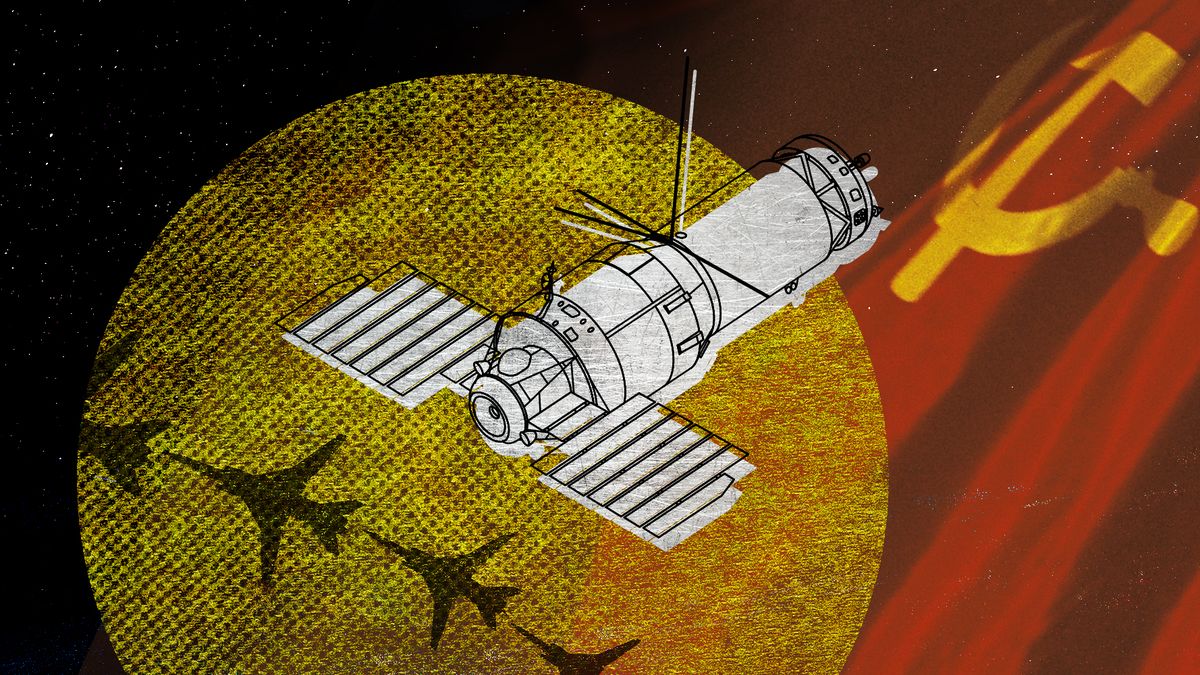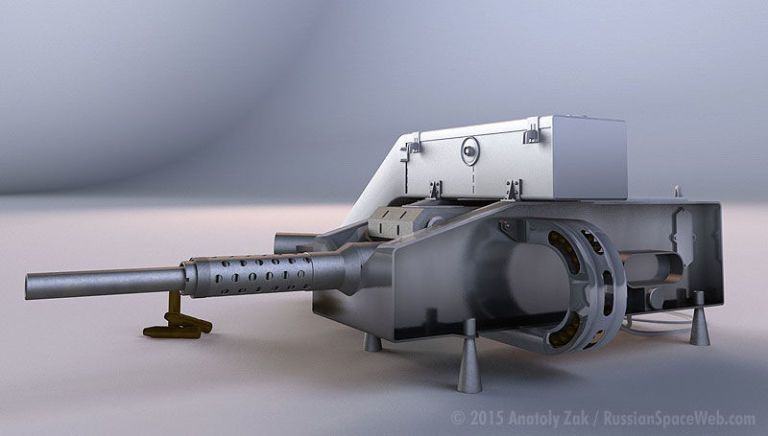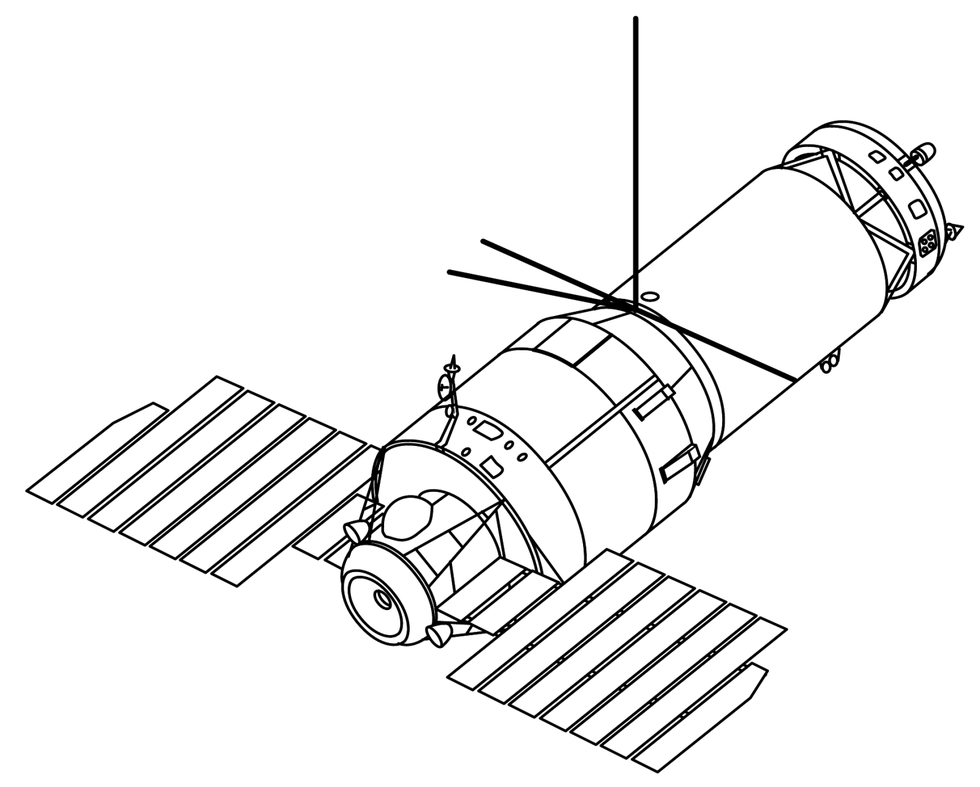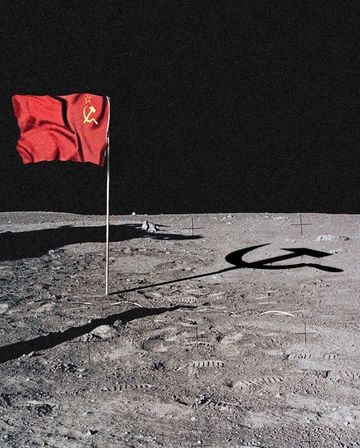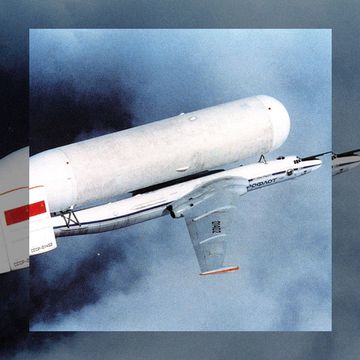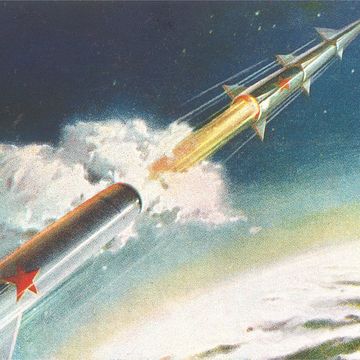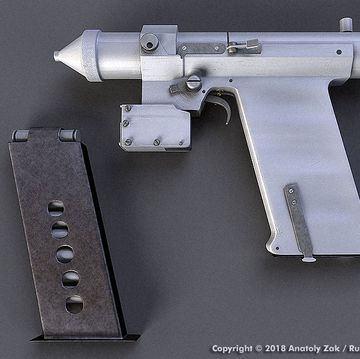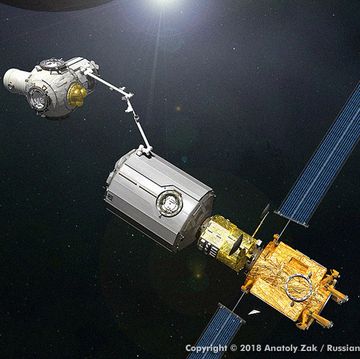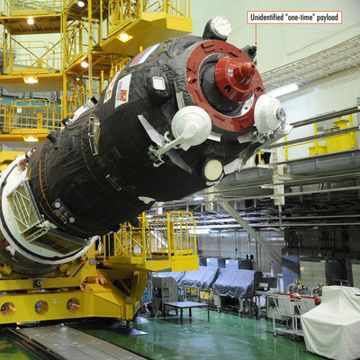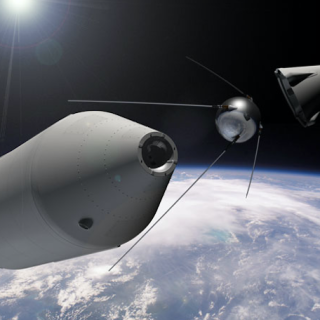A quarter-century after the Cold War came to a close, the only cannon that actually fired in space has finally come to light.
Installed on the Almaz space station in the 1970s, the R-23M Kartech was derived from a powerful aircraft weapon; Aron Rikhter designed the original 23-millimeter cannon for the Tupolev Tu-22 Blinder supersonic bomber. That gun is relatively well known, but its space-based cousin has largely remained in obscurity.
✅ You love badass machines. So do we. Let’s nerd out over them together—join Pop Mech Pro.
Thanks to a Russian television show, the world caught a grainy glimpse of the space gun. Using that footage, we created a virtual model of the R-23M. This is the inside story.
From the dawn of the Space Age, the prospect of American spacecraft approaching and inspecting Soviet military satellites—which, according to the Kremlin’s propaganda, were not even supposed to exist—terrified the secrecy-obsessed Soviet military. The fear of attack on spacecraft was real, with both sides of the Iron Curtain developing anti-satellite weapons. It seemed perfectly logical in the 1960s that the military and piloted spacecraft would need self-defense weapons.
The early Soviet space station project codenamed Almaz (“diamond”) became the first real candidate for defensive space weaponry. The habitable outpost was intended almost exclusively for military purposes, starting with reconnaissance. Along with some state-of-the-art spy equipment, such as cameras and radar, Almaz would carry the cannon in its arsenal.
The USSR assigned the weapon’s development to the Moscow-based KB Tochmash design bureau, led by Aleksandr Nudelman, whose engineers had distinguished themselves with many breakthroughs in the field of aviation weaponry since World War II. For this project, Nudelman’s team developed a 14.5-millimeter rapid-fire cannon that reportedly could hit targets as far as two miles away. Depending who you ask, the 37-pound weapon could fire from 950 to 5,000 shots per minute, blasting 200-gram shells at a velocity of 690 meters per second (1,500 miles per hour). According to veterans of the Almaz project, the space cannon successfully pierced a metal gasoline canister from a mile away during its ground tests.
The physics of space stations limited the weapon, though. Although cosmonauts could fire using an optical sight in their cockpit, they had to turn the entire 20-ton station to point the cannon toward its target.
While R-23M had been in development since the mid-1960s, the rest of the Almaz project dragged behind schedule. The station’s fancy payloads and sensors took longer than anticipated, and in the meantime, the idea itself got lukewarm support from the Soviet military, which was increasingly relying on unmanned satellites for all its space needs. NASA’s Skylab was scheduled to launch in 1973, which meant the USSR faced the prospect of losing the race to put the first space station in orbit. So the Soviet government decided to build a small civilian outpost from off-the-shelf components of the Soyuz spacecraft and available Almaz hardware. The bread-and-butter orbital lab was successfully launched in 1971 under the name Salyut.
After scoring the political points of winning the space station race, the Kremlin allowed the Almaz project to proceed, but “camouflaged” it behind the civilian space stations. Until 1982, the USSR orbited a total of seven space stations under the name Salyut, but three of these were actually Almaz spy stations. The Western intelligence and independent observers quickly figured out which was which, but the Almaz program officially remained under wraps until the end of the Cold War.
Only after the fall of the USSR did Russian sources reveal that the cannon had actually fired in orbit. It happened on January 24, 1975, onboard the Salyut-3 space station. Worried about how firing a giant cannon would impact the outpost itself, Soviet officials scheduled the test firing just hours before the planned de-orbiting of the station, and long after the departure of the crew on July 19, 1974. The outpost ignited its jet thrusters simultaneously with firing the cannon to counteract the weapon’s powerful recoil. According to various sources, the cannon fired from one to three blasts, reportedly releasing around 20 shells in all that would burn up in the atmosphere.
The results of the tests still remain classified. However, it appears that the follow-up Almaz station was to be equipped with a pair of interceptor missiles rather than a cannon. It didn’t matter: The upgraded Almaz was permanently grounded before its scheduled launch in 1978.
In the intervening years, only one photo of the R-23M cannon has been published. However, it now appears that the photo depicted the aircraft-based R-23 or some early prototype of the space-based weapon.
Finally, grainy and dimly-lit TV footage of the space cannon appeared in the Voennaya Priemka, a military show produced by the Zvezda TV channel associated with the Russian Ministry of Defense. The space cannon episode was shot inside the limited-access corporate museum at KB Tochmash. Fortunately, a cameraman went 360 degrees around the cannon, enabling us to screen-grab views of all sides of the hardware. We then imported the visuals into a sophisticated 3D package and traced it with a digital mesh. The result was a virtual model of the R-23M canon, one of the most exotic and secretive weapons of the Cold War.
Editor’s Note: This story was originally published in November 2015.

